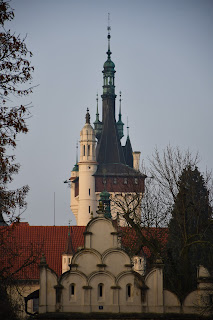Day 1 in Kilifi County: Following Portuguese footsteps in Malindi
Being one of the few people to show my face at the office during the summer, I decided to take advantage of our home office policy and left cold Nairobi for the coastal city of Malindi. I left on Thursday morning: the plan was to spend a day and a half teleworking in Malindi, visit the ruins of Gedi on Friday afternoon, and then join some of my colleagues for a weekend in Kilifi. After my unpleasantly warm experience in Mombasa, I expected to be greeted by cloudless skies and a wall of hot, humid air, so I was surprised by the strong winds that accompanied our descent and the drizzle whose end we caught while alighting.
The book I
was reading on the plane put me in a strange mood. I walked straight out of the
airport building, ignored the taxi drivers, and made my way past the vehicle
security inspection, suddenly finding myself on the main road to Malindi. Had I
thought a little more about what I was doing, I might have turned around again
to the surety of the overpriced airport taxis, but fortunately I was spotted as
soon as I made it past the guard post. A motorcycle driver and two tuktuk
drivers made their way to me before I had even reached the road. Still afraid
of riding a motorcycle without a helmet, I politely declined the services of
the former and went with the tuktuk that arrived first.
It was well
before nine when I was picked up. I had planned to sit down in a restaurant
with Wi-Fi and begin working, but with so much time to spare, I asked the
driver to take me to the Vasco da Gama Pillar. First erected in 1498 or 1499 on
da Gama’s journey to India, the pillar was one among a series of markers
erected on the African coast by Portuguese navigators. The tour guide – whose
accompaniment was obligatory, according to the notice hanging next to the door
of the ticket office – told me that the structure was pulled down when da Gama
left, as Malindi’s Muslim inhabitants were not thrilled about the cross on the
top, but it was erected again a few years later when the Portuguese returned to
establish a factory in the city.
The rulers
of Malindi found a great ally in the Portuguese, enlisting the foreigners’
support in their own struggle against Mombasa for regional supremacy. For
almost a century, Malindi served as a base for the European seafarers until
they jointly defeated Mombasa and took over the city: the Malindi rulers moved
their court to Mombasa and invited the Portuguese to build a fort there.
Besides the pillar, the Portuguese also built a chapel where Francis Xavier
held mass on his journey to Goa, which is why the altar proudly displays the saint’s
image.
Of course,
Malindi’s significance predates the arrival of the Europeans. It was likely
established in the eight hundreds and after its re-establishment by the
Swahilis, it came to rival – at some distance – the larger states of Kilwa and
Mombasa. Serving as an important trading hub, Malindi possibly received a visit
by Chinese explorer Zheng He in the early fifteenth century. The kingdom even
sent an envoy and gift giraffe to the imperial court at Nanjing in 1414, with
the original painting of the giraffe and its attendant still on display at the
National Palace Museum in Taipei.
I sat down
at a restaurant just as it began to rain again. While I worked and sipped my
tea, the rain subsided and made way for blue skies that would last until
mid-afternoon. It struck me that the restaurant where I had stationed myself
was not only Italian in name: it was owned by Italians and visited by Italians
too. In fact, the entire city was so full of Italians that when one local
approached me for money, he automatically greeted me with a “Buongiorno.” Of
course, such a strong Italian population has brought very specific downsides to
Malindi along with good gelato: I left the restaurant when two Italian ladies
sat down for coffee and almost immediately began smoking.
Three of
the four historic sites on Malindi’s all-in-one tourist ticket stand on the
side of the main road that runs parallel to the sea, the only exception being
the Vasco da Gama Pillar, which can be reached by a slight detour. I spent my
entire day on this axis, stopping by the House of Columns on my way to lunch
and visiting the city museum after work. I spent much of the afternoon typing
away in the garden of a quaint restaurant where a small wedding was just taking
place. The bride looked young and radiant, dressed in a beautiful white gown,
so naturally I was rather taken aback when I saw that her groom was a white man
in his sixties who decided to wear short sleeves while all his new relatives
came dressed in suits.
From the
Malindi Museum, which houses a few exhibits on the practices and beliefs of the
local Mijikenda people, I called a tuktuk to my hotel. I had originally chosen
the hotel for its proximity to the city centre only to find out that the
location marker on the booking site was wildly off, so we had to drive quite a
distance to get there. Its name meant absolutely nothing to the driver, but
when I told him of the other hotels in the neighbourhood, he recognised it as
“the hotel across from the naval base.”













Comments
Post a Comment